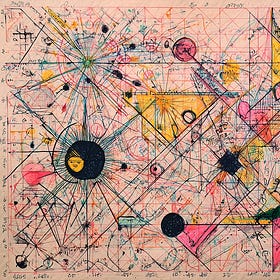Enough with the Playbooks and Frameworks!
Influencers obsess over playbooks and frameworks, but the biggest wins happen when you start messy.
Playbooks and frameworks are like lawyers. You don’t need them until you’ve built something valuable.
Not a day goes by without yet another playbook, framework, or roadmap being promoted by yet another author-entrepreneur on LinkedIn or Substack. Methods are like lawyers. They’re all trying to convince you that you need them.
The startup industrial complex peddles a comforting lie: that success is formulaic. Fill out your Business Model Canvas, map your customer journey, run design sprints, “download my playbook!” and presto—unicorn status awaits! 🦄
This is mythology masquerading as methodology.
Here’s what the consultants and thought leaders conveniently omit: Elon Musk didn’t launch PayPal with a Wardley map. Mark Zuckerberg didn’t validate Facebook through Jobs-to-be-Done interviews. Jeff Bezos didn’t need Porter’s Five Forces to figure out that selling books online might work.
They started with curiosity, a tolerance for chaos, and the willingness to iterate relentlessly until something clicked. Everything else—the frameworks, the canvases, the strategic planning retreats—came after they’d already cracked the code.
Walk through any successful company today and you’ll find mountains of methodology: OKRs, balanced scorecards, Value Proposition Canvases, and whatever McKinsey or some Substack influencer sold them last month. But attributing their success to these tools is like saying sports cars cause wealth because rich people drive Ferraris.
Welcome to The Maverick Mapmaker — where M-shaped, multidisciplinary professionals learn how to orchestrate work between humans and AI. If you refuse to be put in one box… if your mix of skills is your edge… if you want tactics for thriving in the age of AI without falling for hype or doom — this is your place. Stay sharp, stay multidisciplinary, and stay ahead. Subscribe to my Substack now.
Success creates the appetite for structure, not the other way around. When you’re debugging code at 3 AM or cold-calling potential customers who hang up on you, no five-step playbook can substitute for raw determination and the ability to pivot when reality delivers a haymaker to your assumptions.
We study the scaffolding that successful companies erected after they figured things out, then act shocked when following their blueprints doesn’t guarantee the same outcome. It’s like studying a master chef’s kitchen layout and expecting to cook like them without learning how to actually cook.
Most breakthrough companies started as beautiful messes. They stumbled into insights, pivoted away from dead ends, and built their way toward clarity. The sophisticated frameworks came later, once they had something worth systematizing.
“I have no specific method. Each project demands its own way.” — Tadao Ando, architect
This applies beyond architecture. Each venture, each market, each moment in time demands its own approach. The obsession with replicating someone else’s method misses the point entirely.
It’s perfectly acceptable—maybe even preferable—to have no method, no framework, no checklist, no playbook. Start messy. Start curious. Start now. The fancy frameworks will line up to serve you once you’ve earned them.
Playbooks and frameworks are like lawyers. You don’t need them until you’ve built something valuable.
Jurgen
Stop Hiring Experienced Candidates
Stop looking for job candidates with “experience.” It’s the people with experience who built those awful socio-technical systems in the first place.
The Revenge of Command-and-Control
AI agents promise autonomy but deliver the opposite—they need constant instruction, clear objectives, and micro-management to function. This shift threatens to drag human management back to the dark ages of command and control, potentially undoing decades of progress in team empowerment.
Let's Start from Scratch: Organizational Design in the Age of AI
With the community-driven Harmony Pattern Language, we can offer a new path for designing viable hybrid teams that can thrive in our AI-driven future.






Starting "messy" is the best way to start of all, Jurgen.
Only then can you iterate, pivot, and find your customers.
There's no "perfect" "Mission" or "Vision" that leads straight to $$$.
I wrote about exactly this trap here:
https://michaelgoitein.substack.com/p/your-startups-vision-may-be-quietly
Great article. I know everyone needs to pay their bills. But perhaps unknowingly they are pushing this narrative that we need certain things, when in fact we are alright without it.